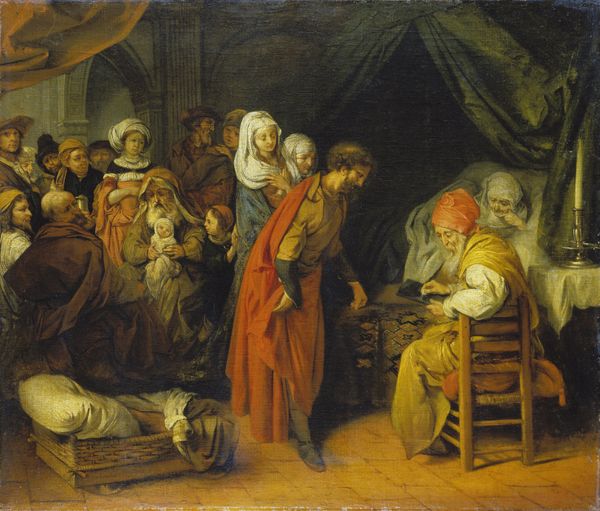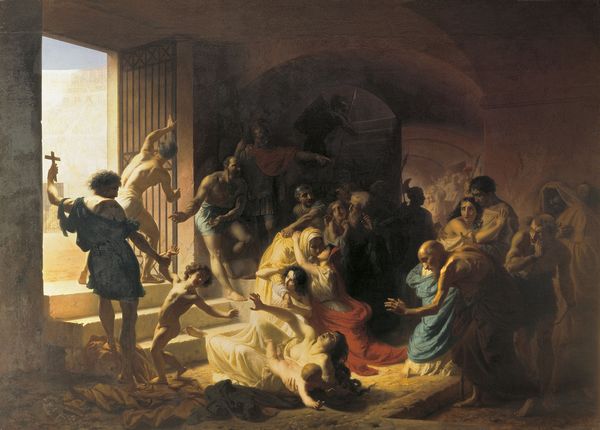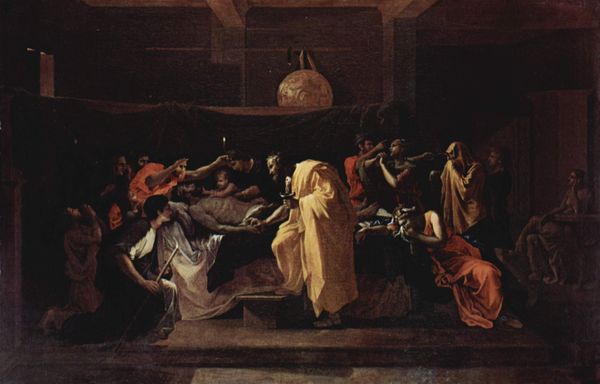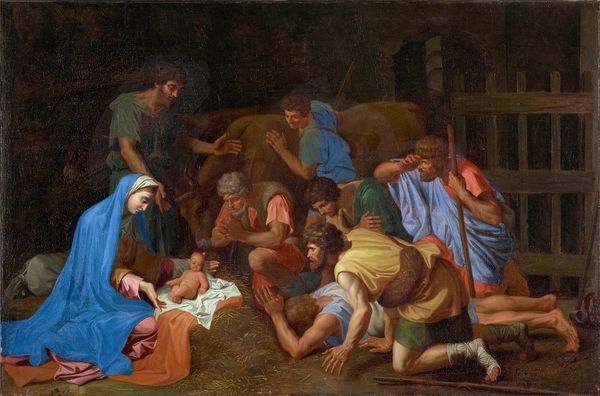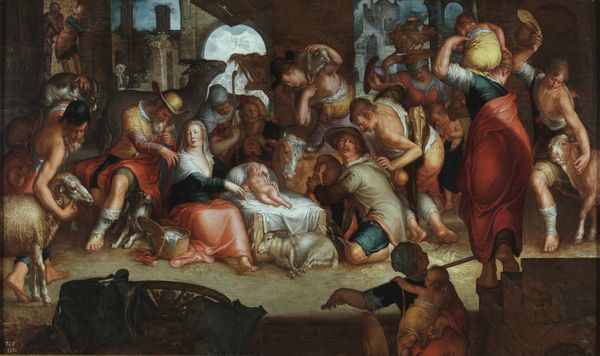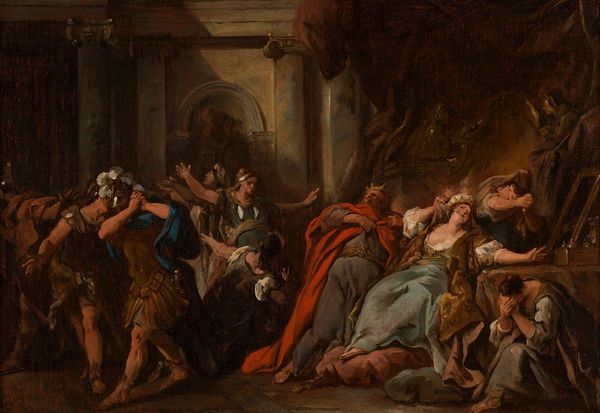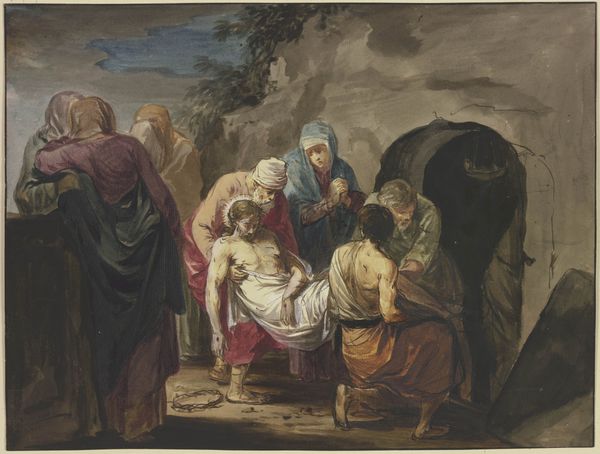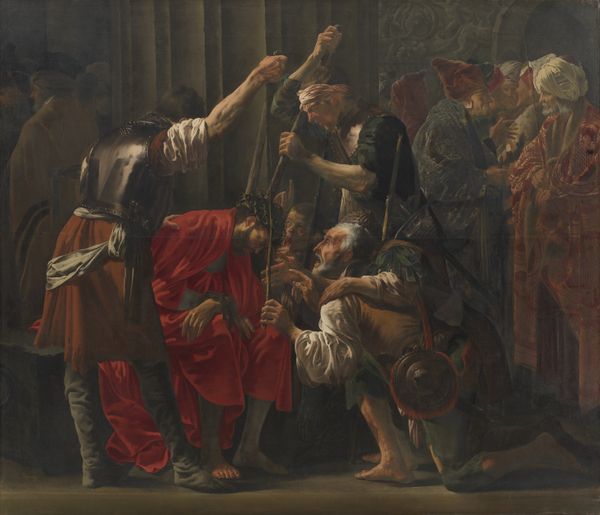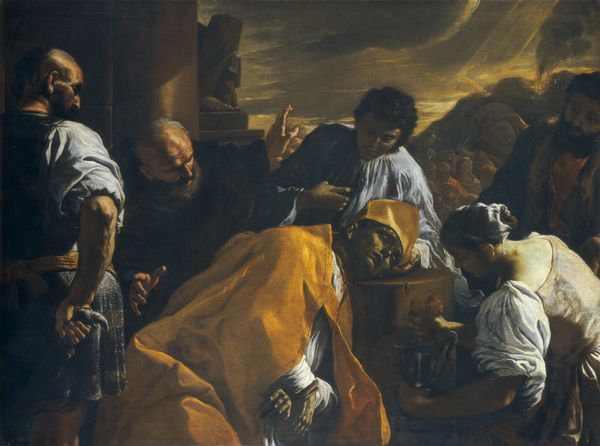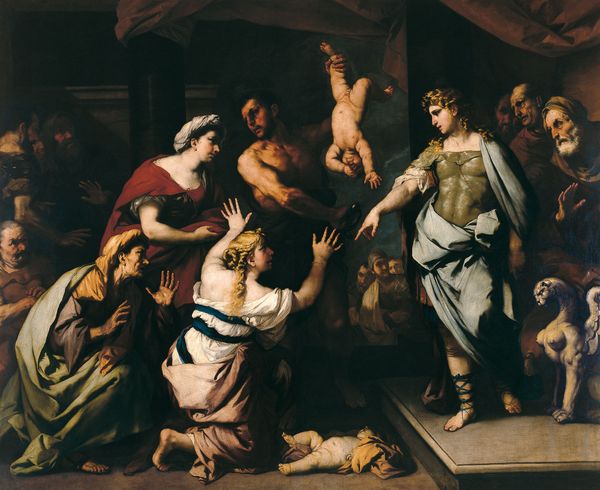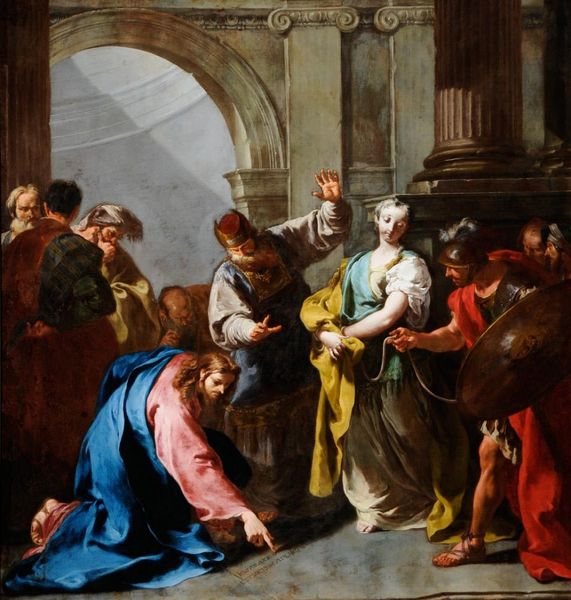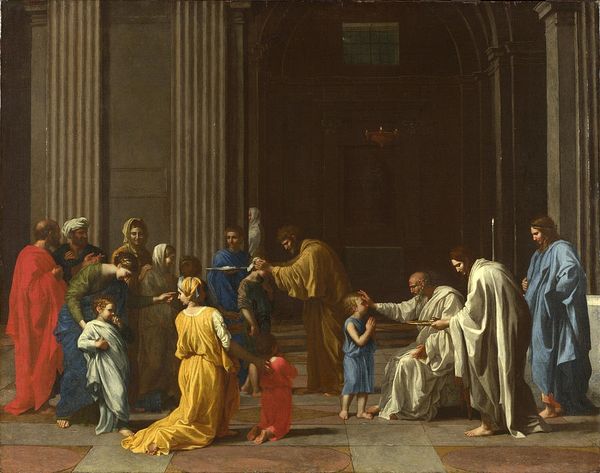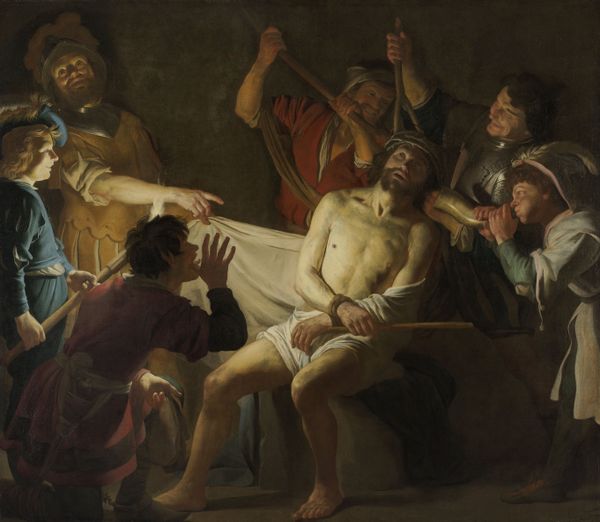
painting, oil-paint
#
portrait
#
neoclacissism
#
narrative-art
#
painting
#
oil-paint
#
classical-realism
#
figuration
#
oil painting
#
history-painting
#
academic-art
Dimensions: 98 cm (height) x 133.5 cm (width) (Netto), 114.4 cm (height) x 149.7 cm (width) x 5 cm (depth) (Brutto)
Editor: This is "The Death of Socrates," painted by Pierre Peyron between 1786 and 1787. It's oil on canvas and the scene is incredibly stark. I'm struck by the way Peyron uses light and shadow. How do you see the impact of materials and historical context in a piece like this? Curator: Considering the means of production, Peyron's use of oil paint allows for meticulous detail, fitting for the Neoclassical style's emphasis on clarity and form. But let’s think beyond the immediate materiality. What socioeconomic conditions allowed for such art? Editor: Well, from my art history classes, I understand that this piece emerged during a time of great social and political upheaval... Curator: Precisely. Neoclassicism, with its focus on reason and order, arose partly as a response to the perceived decadence of the aristocracy and the complex compositions of the Baroque. Look at the precise lines, the subdued palette. These were deliberate choices meant to evoke a sense of moral seriousness and civic virtue, qualities appealing to revolutionary sentiments. Do you see that here? Editor: I see the serious theme, for sure! And yes, the clean lines you mentioned… compared to more embellished styles it almost feels like a deliberate act of rebellion against those "decadent" artistic styles. But how does that relate to labor or consumption? Curator: Excellent question! Think about the pigment itself, the canvas. Who sourced those materials? Who prepared them? A whole economy existed to serve artists like Peyron. And for whom was he creating this image? A wealthy patron, likely part of a class grappling with its own identity and future power, *consuming* this narrative of virtue. The shackles visible in the artwork act almost like an unsubtle reminder of enslaved labor. Editor: I see now! So, even a painting about ancient philosophy is embedded in a very real, material world of labor and power. I wouldn't have noticed that just looking at it without knowing the history! Curator: Exactly! It's about seeing the layers, questioning how the very act of creating and consuming art reflects—and shapes—society. It all boils down to labor, the materials at hand, and their ultimate end. Editor: This materialist approach gives me a fresh perspective. Thanks for enlightening me!
Comments
statensmuseumforkunst almost 2 years ago
⋮
At the Salon, the exhibition held by the French monarchs at the Louvre, two leading – and competing – artists both submitted a painting of this theme in 1787. Most agreed that Peyron suffered defeat at the hands of his competitor, J.L. David (1748-1825), but even so Peyron’s picture became a principal work within French pre-revolution art. Motif Peyron was a favourite of the monarch’s regime, and this work was commissioned by the king’s Minister for Culture. And indeed the powers that be had little cause to be offended at the scene depicted; democratic Athens committing judicial murder with the death of the philosopher Socrates. Socrates dies a hero’s death, for just before he drinks the deadly draught of hemlock he speaks to his students of the immortality of the soul, and with his steadfast devotion to the teacher’s calling he constitutes an exemplum virtutis, a paragon of virtue – a frequently seen theme in the art of the period. Composition The composition meets the standards prevalent at the time with its relief-like arrangement of the space and figures: The back wall of the room runs parallel to the surface of the picture, and all characters are viewed from the front or in profile. This corresponds to the composition used in David’s painting, which was hung at the Salon after some delay and attracted a great deal of attention there. In an attempt at avoiding comparisons with his rival, Peyron held back his own painting and only put it on display during the last few days of the exhibition period.
Join the conversation
Join millions of artists and users on Artera today and experience the ultimate creative platform.
